Ramen has surged in popularity in the United States, South Korea and other places. Retail sales in the US have risen 72 per cent since 2000, according to NielsenIQ, a sales tracker. In the past year, Americans bought more than US$1.6 billion worth.
Japan’s best ramen? Gourmet guide ranks nation’s top 100 ramen restaurants
Japan’s best ramen? Gourmet guide ranks nation’s top 100 ramen restaurants
In restaurants, versions beyond the traditional soup are appearing.
Some Japanese frequent ramen shops twice or three times a week. They emerge, dripping with sweat, smacking their lips.
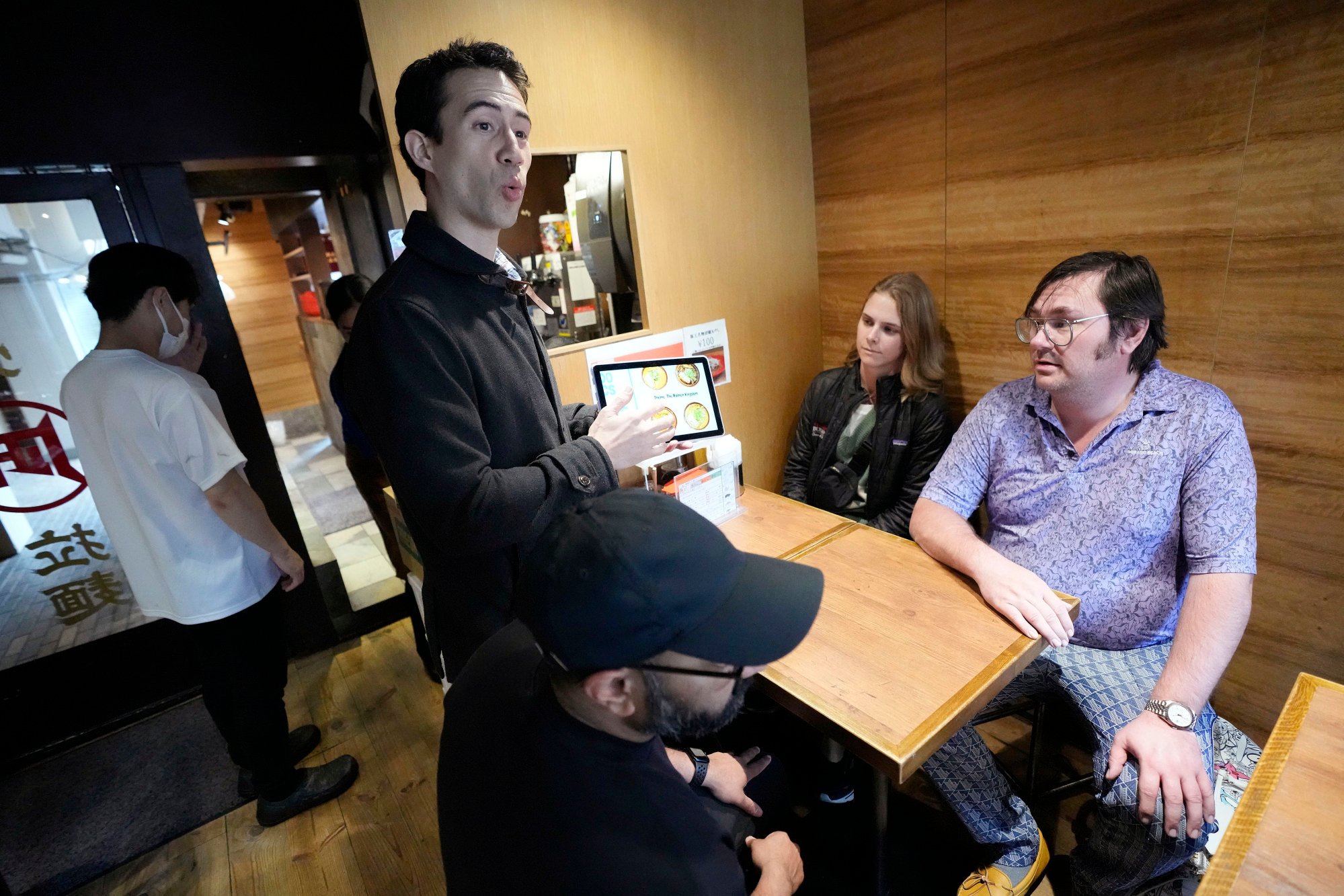
“I’m probably a talking bowl of ramen,” says Frank Striegl as he leads a dozen American tourists through the back alleys of Tokyo’s Shibuya district on what he calls “the ultimate ramen experience”.
The crowd is led behind a shabby doorway, sometimes down narrow stairs, to a dim-lit table where ramen gets served in tiny bowls about a quarter the size of a regular ramen bowl. That is so guests have enough room in their tummies to try out six different kinds of ramen, two at each spot during the tour.
One restaurant, Shinbusakiya, offers “Hokkaido classics” from the northernmost main island in Japan, while another, Nagi, offers “Fukuoka fusion” from the main southern island, Kyushu. It includes a green ramen, similar to pasta al pesto. Syuuichi, which means “once a week”, features curry-flavoured ramen.
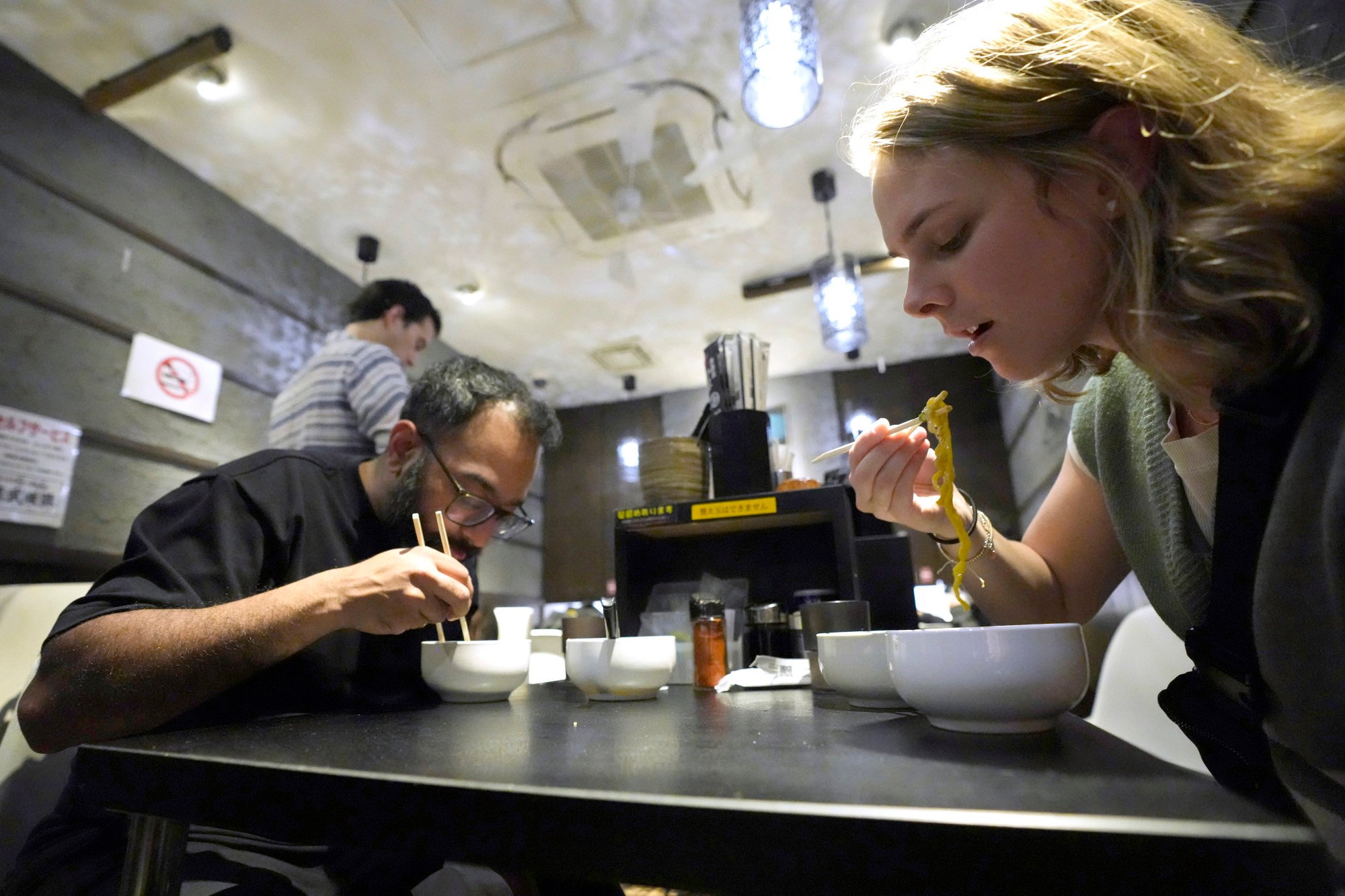
“It’s not just, of course, about eating delicious ramen, but also learning about it,” said Striegl, a Filipino American who grew up in Tokyo. He calls ramen “people’s food”.
“A lot of countries around the world have their version of ramen in a way,” he said. “So I think because of that, it’s a dish that is easy to understand. It’s a dish that is easy to get behind.”
While the tour participants were relishing their noodles, Striegl outlined a brief history of ramen: its roots date back to the samurai era, when a shogun took a fancy to Chinese noodles (known as lamian).
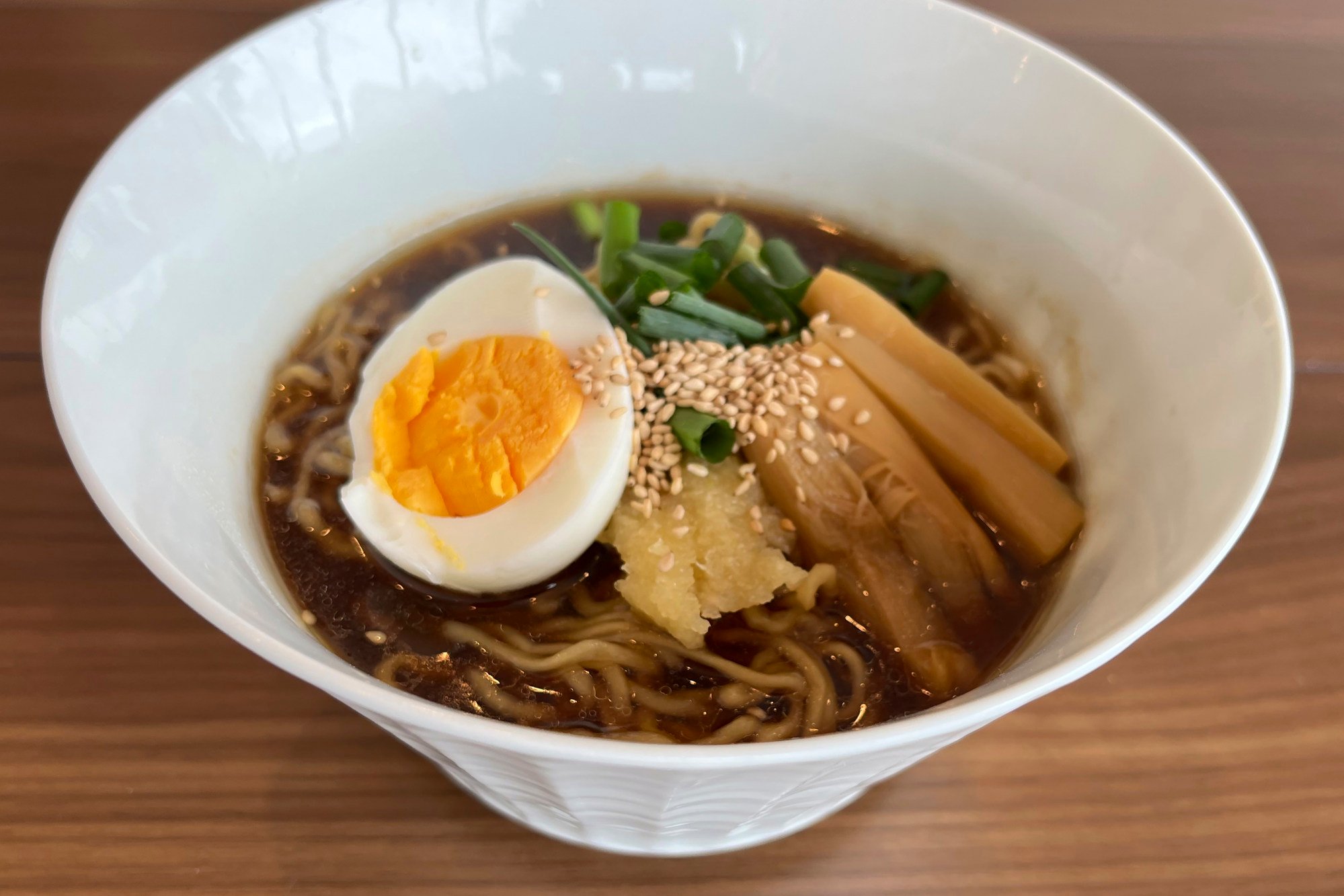
Katie Sell, a graduate student on Striegl’s tour, called ramen “a kind of comfort food, especially in the winter. Get a group of friends, go have some ramen and just enjoy it.”
While ramen has never been more popular in Japan, ramen places have struggled because of the Covid-19 pandemic, the weakening Japanese yen, and the higher cost of wheat imports and energy, according to a study by Tokyo Shoko Research.
One beneficiary of the pandemic is a home delivery service for frozen, professionally cooked ramen. Called takumen.com, it boasts some 500,000 subscribers in Japan.
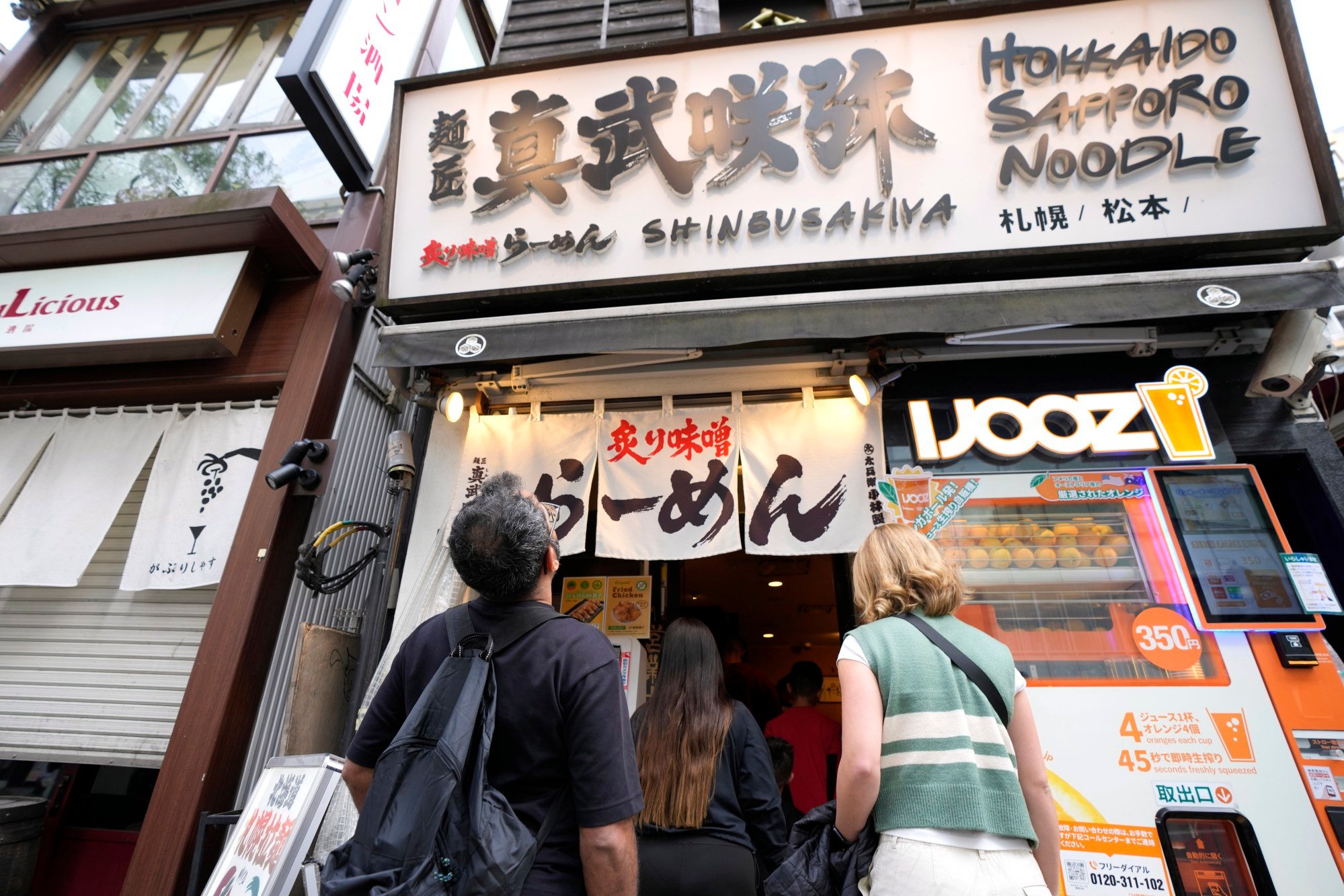
Why ramen? Unlike pasta or curry, ramen is difficult to replicate at home, says Kenichi Nomaguchi, co-founder of Gourmet Innovation, which has signed on 250 of the country’s top ramen joints to sell packaged versions of their soup, noodles and toppings.
Making it from scratch involves hours of cooking stock, with pork, beef or chicken, various fish or bonito flakes, and kombu kelp. Some stock uses oysters.
Besides the different soup stocks and flavours, onions, grated garlic, ginger or sesame oil can be added for extra punch. Toppings can include bean sprouts, barbecued pork, boiled or raw eggs, seaweed, fermented bamboo shoots called menma, chopped spring onions, cooked cabbage, mangetouts or corn.
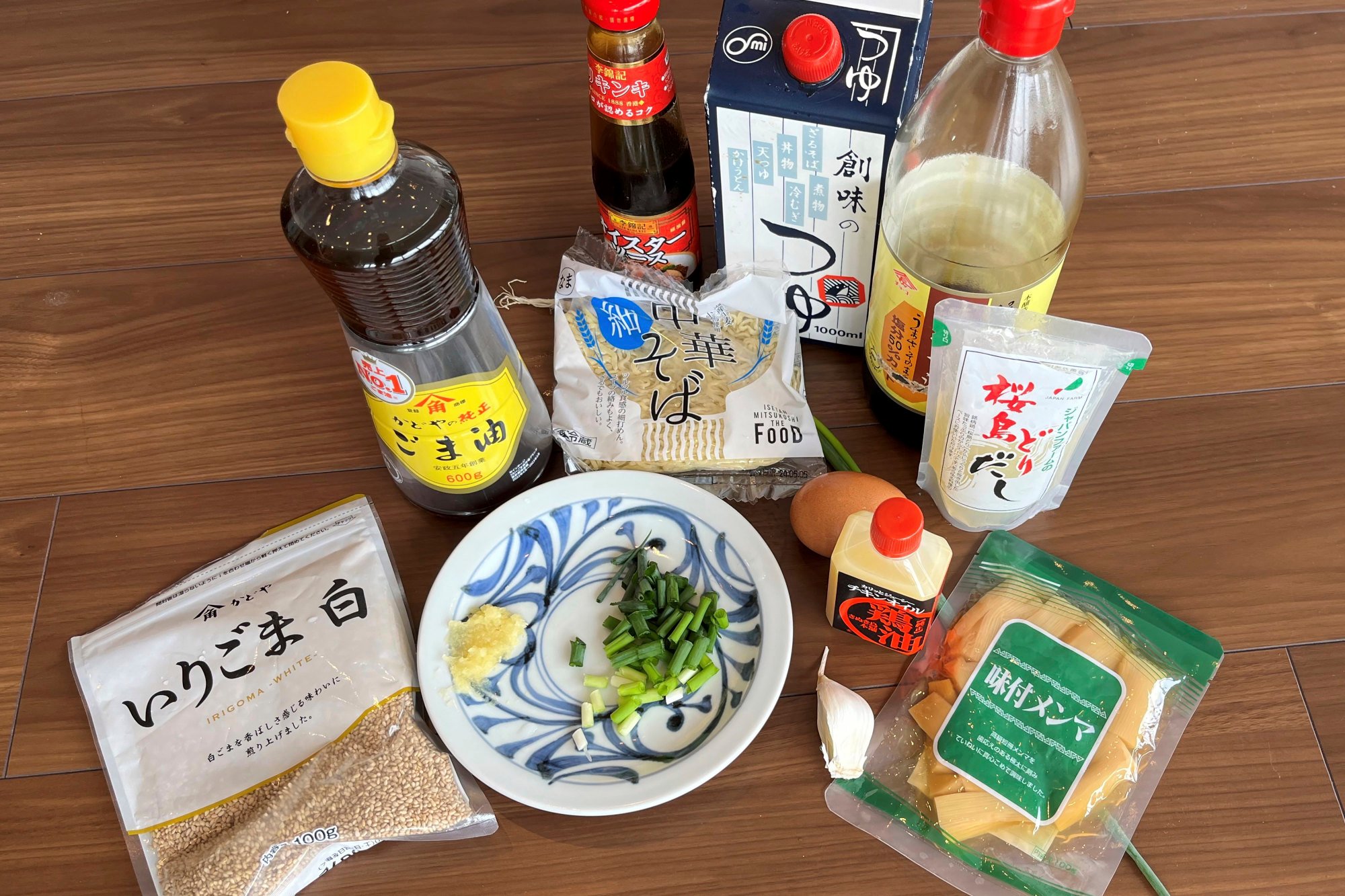
Some insist a bowl of ramen is not complete without a slice of narutomaki, a whitefish cake with a pink spiral pattern.
Unusual varieties include coffee ramen and ramen topped with ice cream or pineapple.
Jiro-style ramen, named for a legendary restaurant in Tokyo, features mounds of vegetable toppings, barbecued pork and pungent, grated garlic seeped in a fatty pork-based stock.
“Impact is important. So the pork has to be big so it’s truly memorable,” said Kota Kobayashi, who serves Jiro-style ramen at his chain, Ore No Ikiru Michi which translates to, “The way I live my life”.
The best ramen places in Hong Kong – this Frenchman knows his noodles
The best ramen places in Hong Kong – this Frenchman knows his noodles
Kobayashi, a former professional baseball player, can wax philosophical about ramen. One cultural difference he has observed is that Americans tend to leave the noodles and drink all the soup, while the Japanese mostly do the opposite.
Taste is only part of what makes good ramen. One must also offer entertainment, Kobayashi said.
At his restaurants, the chopsticks are tucked in a box on a shelf, so first-time visitors ask where they are. Repeat customers go straight to that box. Kobayashi calls out, “Welcome back,” making the customers feel a connection, even if he does not remember a thing about them.







